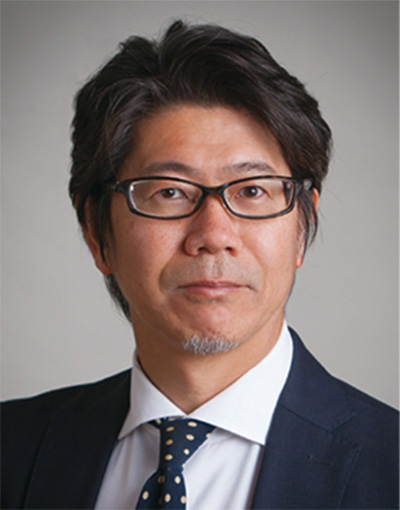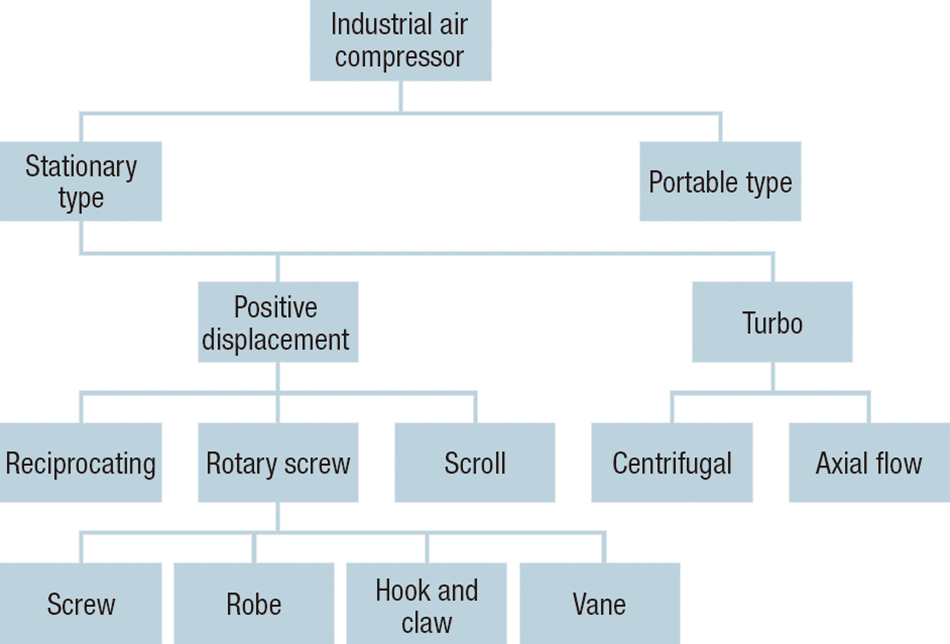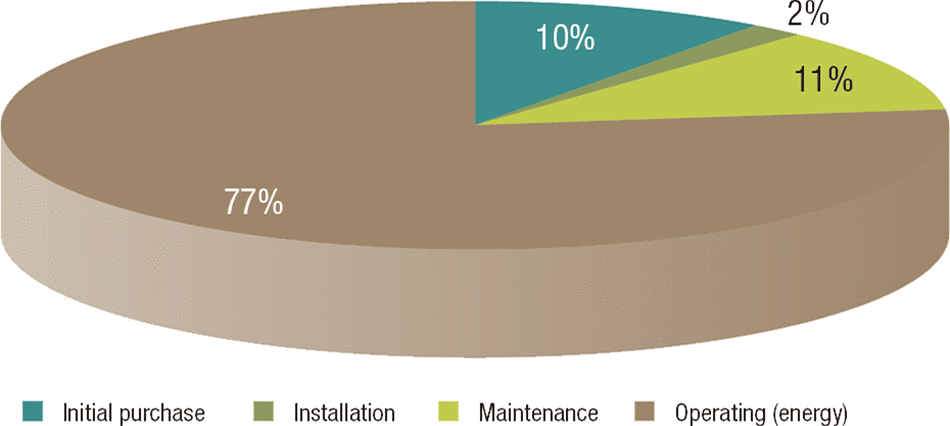GLOBAL INNOVATION REPORTHitachi’s Global Growth Strategy for Compressed Air Solutions
Highlight
Air compressors are essential equipment at manufacturing sites. Hitachi has years of experience in the compressor industry and has a comprehensive product portfolio. In 2017, Sullair, LLC. joined the Hitachi Group and the Group has been expanding its business globally. This article presents Hitachi's compressed air solutions for a wide variety of customers.

1. Introduction
Air compressors exist in nearly every production facility or on every construction site, but it is not often understood how exactly they work. Air compressors take in ambient air, the air people breathe, and trap it between two rotors. As the rotors turn, the pressure of the air is increased, which is then output for a variety of applications. Compressed air is used in virtually every industry, from powering air tools on a construction site to creating artificial snow at a ski resort, applying air brakes on roller coasters, sorting fruit or assembling packaging or corrugated boxes at a food producer, lifting cars or powering tools at auto shops, and even powering the iconic Water Fountains of Bellagio in Las Vegas. Simply stated, compressed air is often referred to as the fourth utility for manufacturing sites.
Hitachi has had years of experience in the compressor industry, with the very first Hitachi air compressor introduced in 1911, one year after Hitachi, Ltd. was founded. The air compressor market continues to grow globally and is still evolving. With the global market demands differing by region, Hitachi has continued to diversify its operations and portfolio within the Hitachi Group. To better meet the changing market needs, Hitachi’s respective air compressor companies merged internally and consolidated into Hitachi Industrial Equipment Systems Co., Ltd. (HIES). On July 13, 2017, Sullair, LLC. became a member of Hitachi’s air compressor business. With a global customer base and a comprehensive product portfolio, Hitachi is in a position to further expand its business to provide total compressed air solutions and contribute to the success of its customers.
2. Outline of Hitachi and Sullair’s Air Compressors
Air compressors are traditional but essential equipment in the manufacturing and construction industries. HIES and Sullair have both stationary and portable compressors – with stationary compressors typically used in manufacturing plants and portable compressors used on construction sites. Stationary compressors are typically driven by electric motors and portable compressors by a diesel engine (see Figure 1).
The key air compressor technology lies in the air end. In the modern industry, rotary screw technology is the dominant technology. Oil-free is a relatively new trend in the industry but is quickly growing and is a USD 2 billion industry globally. Hitachi introduced its oil-free rotary screw compressor in 1980. Traditional rotary screw air ends operate using lubricants. Oil-free compressors do not use a lubricant in the screw chamber, thus providing oil-free air at the outlets. Oil-free air is preferred in many industries, particularly in sensitive manufacturing environments such as electronics, pharmaceutical, chemical, and food and beverage where oil should not come into contact with the product being manufactured (see Figure 2). Hitachi has remained a leader in oil-free technology and innovation, particularly in the Japan market. With this effort, 40% of the Japan market uses Hitachi’s state-of-the-art oil-free air end technology(2). Sullair, meanwhile, has a vast diversified customer base globally, especially in North America. Introducing Hitachi oil-free technology to Sullair’s customers in North America and Latin America, and in Europe, the Middle East, and Africa (EMEA) has created great synergy between the two organizations.
3. Contributing to Society by Providing High Efficiency, High Quality, and Optimized Air Solutions
3.1 Compressed Air is Fourth Utility
Compressed air is often described as the fourth utility, as industrial companies use compressed air similarly to water, natural gas, and electricity. Significant amounts of energy are used to produce compressed air at manufacturing facilities. According to the United States Department of Energy (DOE), 90 billion kWh of electricity is consumed annually by compressed air systems in the USA. To relate this back to a customer’s site, the DOE has shown compressed air can account for approximately 10–30% of energy consumption at some facilities. Expected savings opportunities range from 15–60%. With USD 0.06 per kWh being the average electrical cost in the USA, compressed air consumes USD 5.4 billion annually(3). The energy used to operate air compressors also accounts for the bulk of their lifecycle cost, making up 77% of the total in the USA (see Figure 3).
3.2 Maintenance of Air Compressors is Critical to Saving Energy
To drive a car efficiently and to help ensure a long life, the engine oil requires a periodic change, the filter may need to be cleaned, the tires must be aligned, and more. Likewise, air compressors require periodic maintenance to run efficiently and continuously. The basic maintenance cycle for an air compressor is: (1) Change the lubricant, (2) Replace the filters, and (3) Overhaul the air end. Air compressor manufacturers typically suggest periodic maintenance and a multi-year service contract. This way, a compressor can maintain optimal efficiency and can be protected against sudden damage or downtime.
Many manufacturing facilities produce millions of dollars of products each day, so if their compressor goes down, the stakes are high.
The new digital tools Sullair has created predict the signs of faults with Internet of Things (IoT) monitoring technology. It is now able to advise customers if maintenance is needed earlier than the simple hour meter. This will ensure customers’ compressors are always in optimal condition. Hitachi and Sullair also have plans to further develop their monitoring solutions that use artificial intelligence (AI) and the IoT to detect potential problems before they cause any damage and prevent downtime due to air compressor faults.
3.3 Digital Solutions for Every Customer
Sullair has a wide variety of customers globally and considerable operational technology (OT) in the field of compressed air. By combining with Hitachi’s leading-edge information technology (IT) and OT capabilities built up over the years, Hitachi and Sullair can provide the technology solutions customers and markets demand in a modern economy.
Using the auditing capabilities of Sullair’s AirSuite application, partners and customers can quickly and thoroughly evaluate existing compressor systems (see Figure 4). Combining data with advanced formulas and analytics specifically developed for compressed air solutions can provide valuable insights into systems and requirements. AirSuite’s capabilities also include simulation of compressed air system changes and their corresponding outcomes to ensure that an optimal air system is delivered. For example, customers can see the effects of upgrading to a newer, more efficient compressor, or simply of adding a storage tank. AirSuite helps ensure that customers achieve the return on investment (ROI) they are seeking, and that they are supplied with a system that meets their specific requirements for compressed air in the most energy-efficient manner possible.
AirLinx, a remote monitoring and analysis technology, provides customers with a way to confirm that their compressors are operating reliably, with no warnings or faults. AirLinx connects to the compressor’s controller and sends data to the cloud via a Subscriber Identity Module (SIM) card. Along with 24/7/365 access to information via any web-connected device, AirLinx also allows customers to set up email and text alerts for upcoming maintenance, facilitating planning. AirLinx is a great solution for larger companies with multiple plants because it enables them to review the health of all their compressors from a single location. The interface is customizable by the customer, with the ability to set additional preventative warnings based on their operational requirements and even tighter thresholds for warnings and alerts. AirLinx allows the customer to generate usage reports as well as trend graphs of key performance indicators (KPIs) which are stored for 13 months and available online 24/7. With all of this data, Sullair can provide remote service assistance in a much more immediate, impactful way. AirLinx is also ideal for rental fleet customers. It features Global Positioning System (GPS) tracking and geo-fencing notification* of stolen compressors, providing peace of mind for portable compressor customers.
TotalCare is a new offering by Sullair allowing customers to understand the maintenance required for their compressed air systems in advance and to plan appropriately. In most industrial companies, there is a lack of skilled labor. To help combat this growing issue, Hitachi and Sullair have developed innovative offerings where they help support customers remotely with IoT data as well as offering kits to both skilled and unskilled end customers to keep their compressed air systems in an ideal state.
- *
- A service that uses GPS and mobile data networks to define a region in terms of a notional boundary around a specific location (a “geofence”) and uses software to perform specified actions in response to events such as a mobile device crossing into that region or moving outside it.
3.4 Further Optimization of Total Operation
The intersection of technology and domain expertise is where value is created. MySullair uses a commercial solutions platform to combine product and digital capabilities into a single interface. This empowers manufacturers, partners, and customers and gives them a simple way to optimize their operations. In AirLinx, sensor data – in conjunction with historical characteristics and trends to predict outcomes, valuable resources, and productivity – can be managed and service delivery is harmonized with the needs of the organization. With the compressors’ demand profile known in AirLinx, simulations can be run in AirSuite to see if the customer can save more energy by modifying their existing compressed air system. By using these tools to create a system to self-monitor and self-correct, service resources can be directed to the areas of most need. These are the benefits of moving from the historical time-based approach to event-based maintenance.
By having multiple Hitachi companies work together to provide a unified solution to the customer, the Social Infrastructure and Information Systems (SIIS) Division of Hitachi, Ltd. is now well-positioned to use IoT data as an enabler in the application of data analytics and AI to predictive maintenance. SIIS has already worked on numerous IoT projects involving cloud-based data storage and global cellular SIM management, including a project where it connected one of the world’s largest automotive manufacturers to the cloud. The division is able to consolidate manufacturing knowledge relating to compressors as older experienced staff continue to retire and a technologically savvy Millennial and Generation Z workforce takes their place (see Figure 5).
Another solution Sullair provides to customers is “Air-Over-The-Fence.” This is where Sullair manages all the necessary air power to its customers based on usage. The customer can either pay for compressed air on a per-use basis or choose to purchase it at a fixed cost. Sullair manages all of the customer’s compressor systems with guaranteed supply and 24/7/365 service. This hands-off approach frees the customer from having to deal with their compressed air system. They no longer have to worry about the system and always receive guaranteed air.
4. Conclusions
Even with a traditional product such as an air compressor, technology continues to evolve, with digital technology enabling further innovation not only in the product itself but also in the service and total experience. Customers do not look for air compressors but they know they need ‘compressed air.’ Hitachi and Sullair are now able to provide optimized compressed air solutions to their customers through superior compressor technology and digital solutions for the initial purchase as well as the life span of the compressor. This results in enhanced service, through predictive maintenance and remote monitoring, and increased uptime as potential issues can be identified well in advance. In the end, customers receive a better overall experience with Hitachi and Sullair air compressors.
REFERENCES
- 1)
- Hitachi Industrial Equipment Systems Co., Ltd., “A Century of Hitachi Air Compressors,” (Oct. 2011) in Japanese.
- 2)
- Frost & Sullivan, “Global Air Compressors Market Assessment,” (2018).
- 3)
- Compressed Air & Gas Institute











